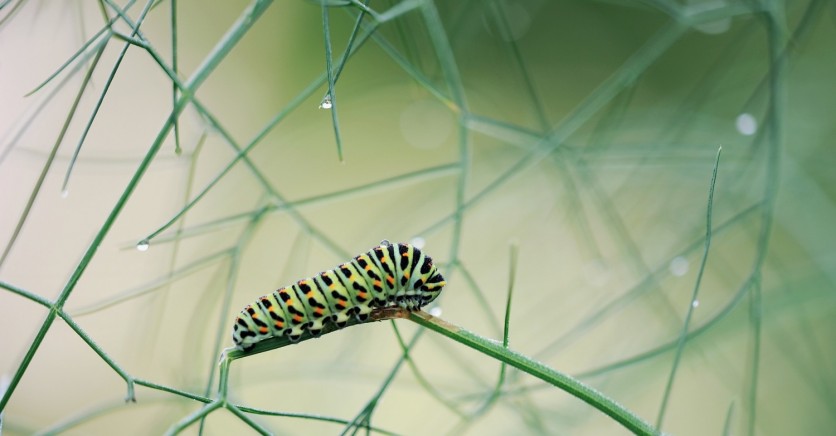Researchers at North Carolina State University have cooked up a squishy, wiggly soft robot inspired by the movement of a caterpillar.
But this is not your garden-variety creepy-crawly: it is powered by a cutting-edge system of silver nanowires that heat up and bend the robot's body in different directions.

Innovative Pattern of Silver Nanowires
This robotic critter's unique movement is controlled by an innovative pattern of silver nanowires that use heat to dictate the way the robot bends, allowing users to steer it in any direction they desire.
Inspired by the biomechanics of real caterpillars, the team engineered the caterpillar bot to mimic the local curvature of a caterpillar's body, which is different when pulling itself forward than when pushing itself backward.
"We've drawn inspiration from the caterpillar's biomechanics to mimic that local curvature, and use nanowire heaters to control similar curvature and movement in the caterpillar-bot," Yong Zhu, corresponding author of the research paper, said in a press release statement.
Engineering soft robots that can move in two different directions is no easy feat. However, with the help of embedded nanowire heaters, the team was able to control the movement of the robot in two ways.
By controlling the pattern of heating in the soft robot, they can dictate which sections of the robot bend, and by controlling the amount of heat applied, they can determine the extent to which those sections bend.
How the Caterpillar Bot Works
So how does this caterpillar bot work? It consists of two layers of polymer that respond differently to heat. The bottom layer contracts when exposed to heat, while the top layer expands.
A pattern of silver nanowires is embedded in the expanding layer of polymer, with multiple lead points where the researchers can apply an electric current.
By applying an electric current to different lead points, they can control which sections of the nanowire pattern heat up and the amount of heat applied.
But that's not all! The researchers found that the more current they applied, the faster the robot moved in either direction. However, there was an optimal cycle that gave the polymer time to cool and allowed the "muscle" to relax before contracting again.
If they cycled the caterpillar bot too quickly, the body did not have time to relax before contracting again, which impaired its movement.
With this caterpillar bot, the researchers have shown that they can control both forward and backward motion as well as how high the robot bends upwards at any point in that process.
In fact, they have even demonstrated that the robot's movement can be controlled to the point where users can steer it under a very low gap, just like slipping it under a door.
This innovative approach to driving motion in a soft robot is highly energy-efficient, and the researchers are excited to explore ways to make the process even more efficient.
Their next steps include integrating this approach to soft robot locomotion with sensors or other technologies for various applications, such as search-and-rescue devices.
The team's findings were published in the journal Science Advances.
Related Article : Robotic 'Shark' Consumes Plastic Trash, Helps Clean London River

![Apple Watch Series 10 [GPS 42mm]](https://d.techtimes.com/en/full/453899/apple-watch-series-10-gps-42mm.jpg?w=184&h=103&f=9fb3c2ea2db928c663d1d2eadbcb3e52)



